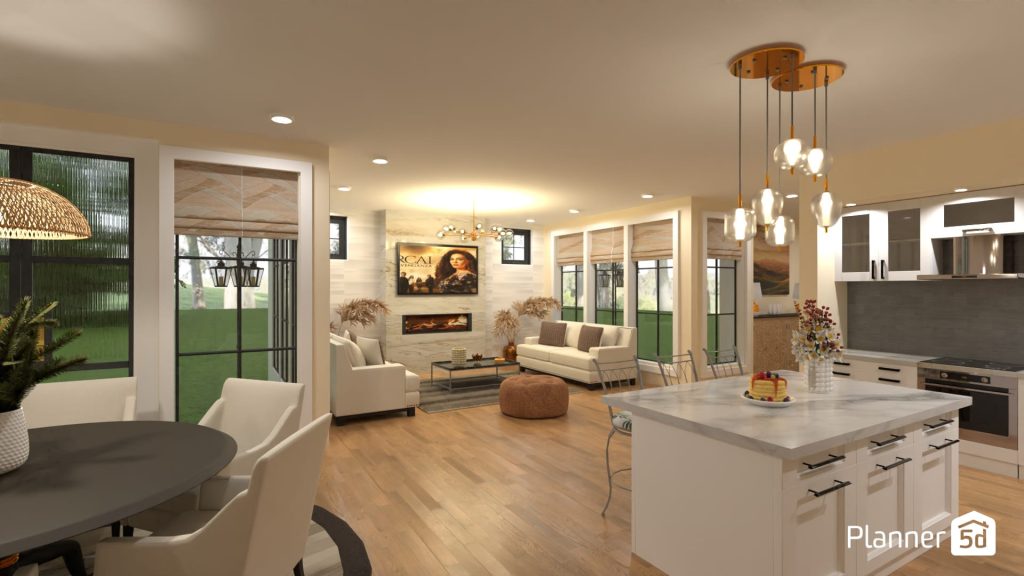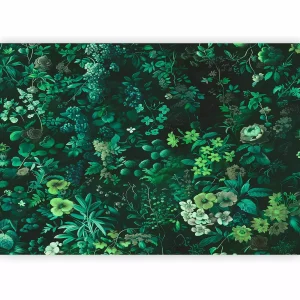Home design should tell your story. I know firsthand how tough finding the right inspiration can be. Last month, I spent nearly three weeks searching for ideas for my living room makeover. The internet is packed with design websites—some fantastic, others not worth your time. My neighbor Jane recently used one of these sites for her kitchen remodel. She saved thousands by finding exactly what she needed. The right website can make all the difference in your project’s success. Let’s jump into the best interior design websites for ideas and inspiration..
Planner 5D

Have you ever made an expensive furniture mistake? Planner 5D helps avoid that headache completely. This interactive tool lets you build your space virtually before buying a single thing. I use it with clients who struggle to visualize dimensions and layouts.
The free version offers plenty of features for most home projects. You can create detailed room layouts and view them from different angles. Their furniture library includes thousands of items that match real-world dimensions.
Tom, my brother-in-law, used Planner 5D when moving into his downtown apartment. He tested three different sofa options before deciding. The platform saved him from buying pieces that wouldn’t fit his awkward living room. The 3D walkthrough feature feels almost like being in the actual space.
Their community section shows what others have created using the same tools. Sometimes browsing these projects sparks ideas you wouldn’t have considered. Planner 5D works well for both quick tweaks and complete home overhauls.
Decorilla
Getting professional design help used to mean spending thousands upfront. Decorilla changed that with their innovative approach to virtual design services. Their platform connects you with real designers at a fraction of traditional costs.
My colleague Sarah tested their service for her home office last year. She paid $599 for a complete design package. This included 3D renderings, a shopping list, and direct designer communication. The finished space looks remarkably like the initial concept images.
Decorilla’s process starts with a style quiz to match you with the right professional. You can browse designer portfolios and select someone whose work speaks to you. Each package includes multiple revision rounds to ensure you’re completely satisfied.
What impresses me most is their room-by-room transformation photos. These real projects show dramatic before-and-after results across various budgets. Their blog features practical advice without the stuffy design jargon many sites use.
Jessica Helgerson Interior Design
Some firms just operate on another level. Jessica Helgerson’s portfolio site showcases truly exceptional work worth studying. Her Portland-based team creates spaces that feel both timeless and fresh simultaneously.
I visited a restaurant they designed while traveling last summer. The thoughtful details made the space feel special without trying too hard. Their website organizes projects by type—residential, commercial, and hospitality. Each includes the story behind the design choices.
Jessica’s team focuses heavily on sustainability and adaptive reuse. They often incorporate vintage elements alongside contemporary pieces. Their project descriptions explain specific challenges and how they overcame them. This transparency offers valuable lessons for any design enthusiast.
The site’s photography captures spaces in natural light. This honest approach shows how rooms actually look rather than relying on tricks. Jessica’s work demonstrates that good design considers both beauty and functionality equally.
The Spruce
Sometimes, you need straightforward advice without the fluff. The Spruce delivers exactly that with its practical approach to home content. Its team tests products and techniques before making recommendations, a research-based approach that builds genuine trust.
I followed their guide for painting kitchen cabinets two summers ago. The detailed steps made a potentially overwhelming project manageable. Their content covers everything from quick weekend updates to major renovation advice. The site organizes articles by room and project type for easy navigation.
The Spruce features real homes with budget breakdowns and source lists. These case studies provide realistic inspiration, unlike the unattainable spaces in many magazines. Their shopping guides include options at various prices rather than just luxury items.
My friend Mark regularly references their plant care guides for his indoor garden. Their maintenance calendars help homeowners stay on track with seasonal tasks. The Spruce makes complex design and maintenance information accessible to everyone.
Houzz

Imagine Pinterest, Angie’s List, and a design magazine combined into one platform. That’s essentially what Houzz offers its millions of users worldwide. The site features over twenty million photos categorized by room, style, and size.
My sister found her kitchen designer through Houzz’s professional directory last year. She could view portfolios, read reviews, and contact pros directly through the platform. Their “View in My Room” feature lets you visualize products in your actual space before purchasing.
The discussion forums connect homeowners facing similar challenges. Real solutions emerge from these conversations between regular people. I’ve learned valuable tricks from these discussions that no design book ever mentioned.
Houzz’s cost calculator helped me budget accurately for my bathroom renovation. Their shop features items from thousands of retailers searchable by style and price. The platform truly serves as a one-stop resource for every stage of home projects.
Architectural Digest
When only the best will do, Architectural Digest delivers consistently spectacular content. Their site showcases spaces created by the world’s top designers and architects, and the photography captures details that elevate spaces from nice to extraordinary.
I save their celebrity home tours for Sunday morning inspiration sessions with coffee. These glimpses into remarkable properties offer lessons in proportion and layout. Their videos allow viewers to experience spaces more fully than still images alone.
AD’s shopping section curates distinctive pieces worth investing in. Their editors highlight items that maintain value and won’t quickly look dated. The site covers major design events and market trends from a knowledgeable perspective.
Their “Clever” section specifically addresses everyday design challenges with smart solutions. This makes their expertise relevant even if your budget isn’t celebrity-sized. AD maintains the gold standard for aspirational yet informative design content.
Design Hunter
Some sites feel like algorithms choosing content. Design Hunter feels like a friend who has excellent taste and makes recommendations. Founder Helen Powell personally curates every feature with a distinct point of view.
I discovered my favorite lighting designer through Helen’s site three years ago. Her focus on craftsmanship and sustainability aligns with my own values. The site showcases homes with clean lines and thoughtful details rather than passing trends.
Design Hunter highlights smaller brands you won’t find on bigger platforms. Helen writes with authentic enthusiasm about products she genuinely appreciates. The photography captures the subtle textures that make minimal spaces interesting.
Their travel section connects design to specific locations around the world. These features explore how the environment influences aesthetic choices in meaningful ways. Design Hunter proves that personal perspective still matters in the digital age.
Mackenzie Collier Interiors
Finding designers who balance creativity with livability isn’t easy. Mackenzie Collier’s site demonstrates this balance through thoughtfully documented projects. Her Arizona-based firm creates spaces with distinctive personalities and practical functionality.
I’ve followed their blog since discovering it during a kitchen renovation research binge. Their case studies explain the thinking behind specific material and color choices. This transparency helps readers understand good design as a thoughtful process.
Their before-and-after comparisons honestly showcase their problem-solving abilities. Many projects involve creative solutions for awkward spaces or unusual client requests. The firm presents design as accessible rather than mysterious or intimidating.
Mackenzie’s team shares budget-friendly alternatives alongside custom splurges. This balanced approach acknowledges that most people combine investment pieces with affordable finds. Their portfolio spans various styles while maintaining consistent quality standards.
Michaels

Craft stores for serious design inspiration? Absolutely. Michaels has evolved beyond basic crafting into a legitimate home décor resource. Their website combines shoppable products with genuinely helpful DIY tutorials.
I created custom wall art following their online instructions during lockdown. The clear directions made the process enjoyable even as a beginner. Their seasonal collections make current trends accessible at reasonable price points.
Michaels offers virtual workshops taught by experienced makers and designers. These classes help develop skills for personalizing your space on any budget. Their project difficulty ratings help users choose appropriate challenges for their skill level.
The site regularly features limited-time discounts on home décor categories. Their blog provides practical advice about mixing store-bought items with handmade elements. Michaels proves that creativity matters more than budget for creating distinctive spaces.
Yana Prydalna
Independent designers often bring fresh perspectives to the field. Yana Prydalna’s portfolio site showcases her bold approach to creating memorable interiors. Her work features unexpected color combinations and material pairings that somehow work perfectly.
I discovered her designs while researching color theory for my dining room update. Her fearless use of color inspired me to make more confident choices. The site documents her process through detailed project narratives and progress photos.
Yana’s international background influences her eclectic yet cohesive aesthetic. Her spaces feel personal rather than following predictable formulas. Client testimonials highlight her ability to capture individual personalities through design elements.
Her resources section includes downloadable guides for common design challenges. She shares sources for unique pieces discovered during her global travels. Yana represents a new generation of designers building direct relationships with clients online.
Conclusion
Finding the right design inspiration can change how you feel about your home. These ten websites offer distinctive approaches for creating spaces you’ll love. Each offers something unique while maintaining genuine quality and usefulness.
Explore these sites based on your specific project needs and aesthetic preferences. Bookmark those that speak to your personal style for future reference. Remember that great design combines inspiration from many sources with your own perspective.
Start with small projects to build confidence in your design decisions. Your home should ultimately reflect who you are and how you live. These resources can guide your choices without dictating them entirely.
Also Read: Simple and Creative Scrap Wood Projects
FAQs
Consider your daily habits, existing furniture, and the feeling you want in each space.
Yes, several focus specifically on affordable solutions and DIY alternatives.
Focus on timeless basics with smaller seasonal updates to avoid constant redecorating.
Not necessarily—these resources provide excellent guidance for many DIY-friendly projects.
Create specific idea collections for each project rather than general inspiration boards.



